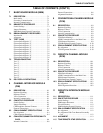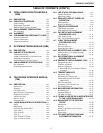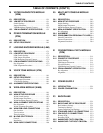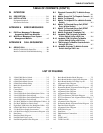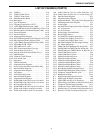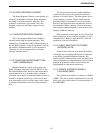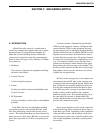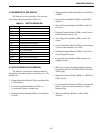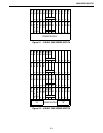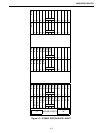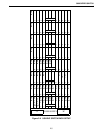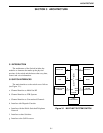
INTRODUCTION
1-2
1.2.10 STATUS REPEATER CHANNEL
The Status Repeater Channel is one repeater in a
site that is designated to transmit update messages
occurring on all other repeaters at the site. This
repeater is available for voice traffic, but is not
normally assigned as the Home repeater for any
mobiles.
1.2.11 MONITOR REPEATER CHANNEL
This is the repeater channel that a mobile is
currently monitoring for update messages. This
repeater may be either the mobile's Home repeater or
the site Status repeater. A special algorithm is used by
the mobile to determine which is to be monitored.
Generally, it is the last repeater that a valid data
message was detected on.
1.2.12 TELEPHONE INTERCONNECT AND
DATA TRANSMISSION
Mobile transceivers can be used to access the
Public Switched Telephone Network (PSTN) on the
800 and 900 MHz bands. However, this interconnect
operation must be on a secondary basis to dispatch
operation. An exception is when the trunked system or
channel is assigned exclusively to one user. In addi-
tion, interconnect calls in a private radio service must
be related to the business activities of the particular
user.
The actual connection to the public telephone
system may take place at any location such as the
repeater or a control station. The interconnect device
can be separate or shared. Timers which limit the
maximum length of transmissions are not required.
However, the equipment must automatically turn off
the transmitter within 3 minutes of the last transmis-
sion (except if another dispatch or interconnect call is
initiated within this interval).
Data transmission and paging are also allowed on
these frequencies. It also must be secondary to voice
communication. Refer to applicable FCC rules and
regulations for more information.
1.2.13 PUBLIC SWITCHED TELEPHONE
NETWORK (PSTN)
If interconnect calls are to be placed by mobiles
or landside users to mobiles, the Switch is connected
to the Public Switched Telephone Network. The
specific mobiles which can place calls and other inter-
connect parameters are determined by how the system
manager programs the Call Processor and by the
programming of each mobile transceiver.
1.2.14 PRIVATE AUTOMATIC BRANCH
EXCHANGE (PABX)
The system has the ability to connect to a PABX
or PBX. This allows mobile originated calls to use the
dial access codes and the least cost routing facility of
the PABX/PBX.



